Mastitis in goats is the inflammation of the mammary glands and chemical changes of the milk. Mastitis is seen mainly in meat and milk-producing goats. The disease is more prevalent in intensive and semi-intensive rearing goats. Mastitis is one of the significant causes of loss of revenue in goat farms. As a farm owner, you must be cautious about the spread and introduction of mastitis in goats.
Importance of Mastitis in Goats
Mastitis is one of the most common mixed infectious diseases of goats. The disease is mainly seen in dairy goat breeds. The disease is caused by bacteria, viruses, fungus, or mycoplasma, and also due to physical injury to the udder and teats. Mastitis in goats is seen by inflammation in the udder, changes in the quality of milk, reduced milk production, and kids’ mortality due to lack of milk and infection.
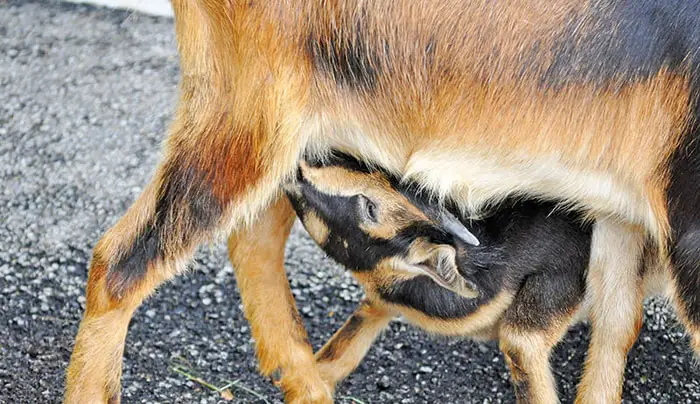
Causes of Mastitis in Goats
Both infectious and non-infectious agents cause mastitis. The infectious causes of mastitis are involved bacteria, viruses, fungus, and mycoplasma. The bacterial species involved in mastitis are Streptococcus aureus, Staphylococcus agalactiae, Staphylococcus dysagalactiae, S uberis, S Capri, Pseudomonas aeruginosa, E Coli, and Clostridium spp. The Caprine arthritis-encephalitis virus (CAEV) causes mastitis in goats. The Mycoplasma capricolum, M mycoides, and M putrefaciens causes mastitis in goats. Few yeast species, excessive use of anti-inflammatory drugs, and wound in the udder may also cause mastitis.
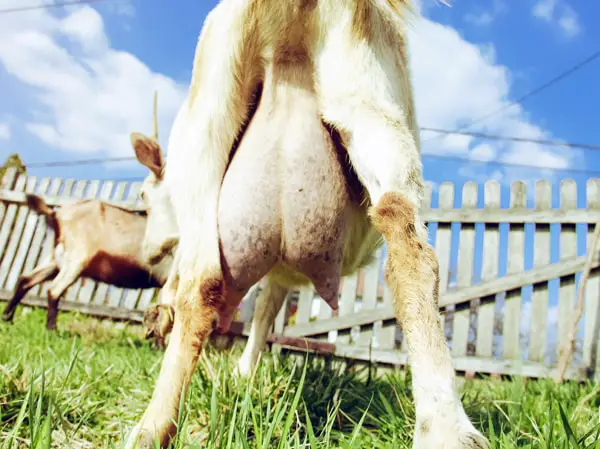
Risk Factors of Goat Mastitis
In the following cases, mastitis is more prevalent in goats:
- Poor hygiene and sanitation.
- Overcrowding.
- High humidity and extreme temperature.
- Sudden changes in diet.
- Abnormal anatomy of the udder and teat of goats.
Pathogenesis of Mastitis in Goats
The bacteria are generally present in the environment of goats. If any stress condition happens or immunosuppression, the bacteria enter the udder through the teat, and localized infection occurs. The bacteria grow in the udder, cause inflammation, swelling, and redness of the udder. The excess bacteria may also travel to the systemic circulation and produces systemic signs like fever, endotoxemia, bacteremia, and shock.
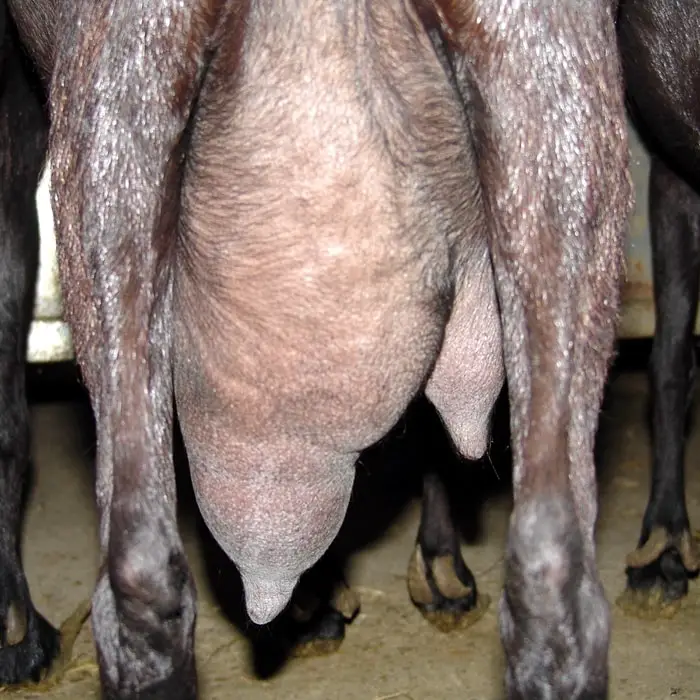
Clinical Signs of Caprine Mastitis
The mastitis in goats may be clinical or sub-clinical, depending on the severity of the disease. The clinical signs of mastitis are:
- Fever may be up to 105 F.
- Acute swelling of the udder,
- Redness of the udder and teat.
- A painful condition in teats and udder.
- Udder becomes complicated and sensitive to touch.
- The milk becomes pink or yellowish, lighter, presence of clots.
- There is an excessive number of somatic cells in the milk of goats.
- Depression.
- Loss of appetite.
- Decreased milk production.
- Goat kids may die due to insufficiency of milk and infection from mother.
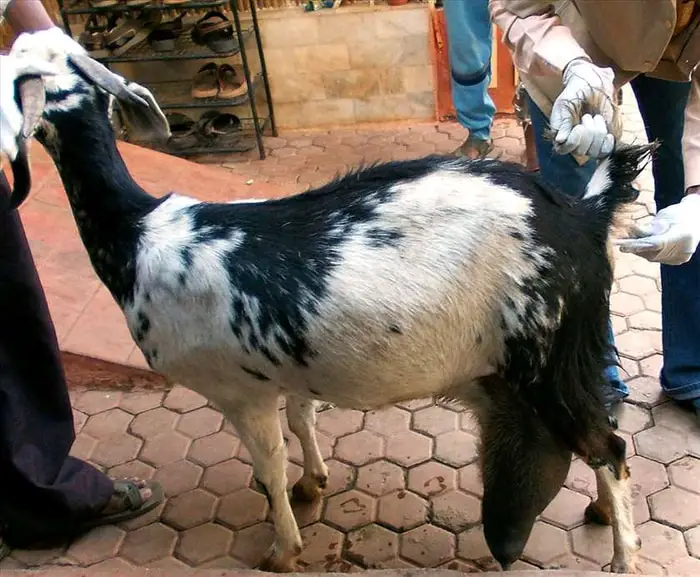
Diagnosis of Mastitis in Goats
Caprine mastitis can be diagnosed in the following ways:
- History of recent stress in the herd.
- Specific clinical signs in affected goats.
- Determination of Somatic Cell in the milk and it must be more than 1,00,000/ml of milk.
- California Mastitis Test (CMT).
- ELISA for specific bacteria.
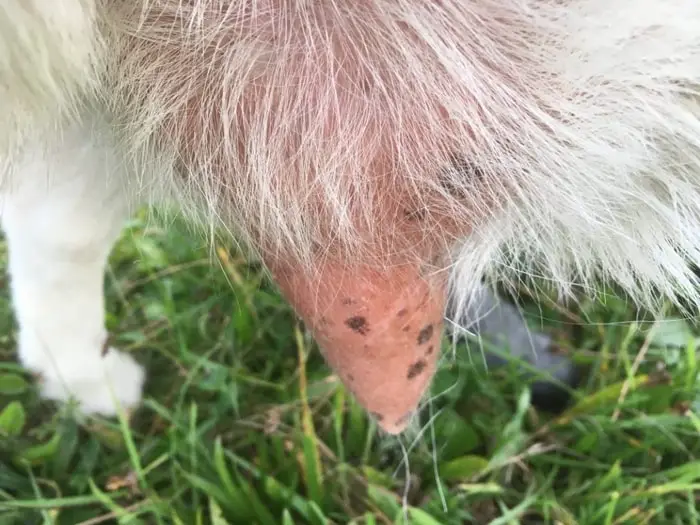
Treatment of Caprine Mastitis
The treatment strategies of treatment of mastitis are as follows:
- Drying off: The affected goats should be drying off by injecting 2% Chlorohexidine solution in teats; two injections at 24vhours intervals. This injection will control the somatic cells in the udder and milk.
- Antibiotic Treatment: Inject a broad-spectrum antibiotic both in parenteral and intra-mammary infusion will reduce bacteria load and early recovery.
- NSAID or Corticosteroids: Corticosteroids will reduce the inflammation and pain in the udder and increase the recovery time.
- Antibacterial ointments may be applied to tread managed teats and udder.
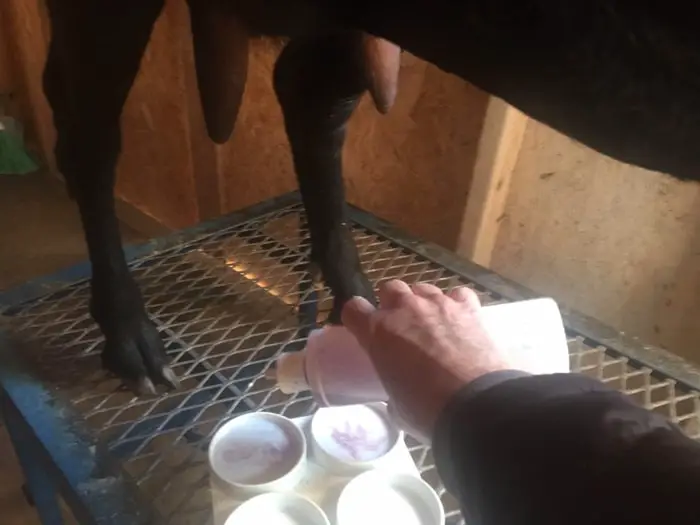
Prevention and Control
Prevention of mastitis in goats is better than treatment. The preventive measures are:
- Maintain the hygiene and proper sanitation of the goat house.
- Regularly clean the floor of the goat’s house.
- Kids’ houses must be clean and disinfected properly.
- Reduce the stress in goats farms.
- Avoid overcrowding in farms.
- Prevent the foot rot and foot scald properly.
- Hygienic milking of goats.
- Use of mild antiseptics at teats after milking.
- Avoid sudden changes in the diet of goats.
- Cake special care during extreme environmental conditions.
Concluding Remarks on Goat Mastitis
Mastitis is an infectious disease and caused by several infectious and non-infectious agents in goats. The disease causes severe economic losses in the goat farm by reducing milk production, performance, child mortality, and treatment costs. The disease can be prevented by taking proper hygienic measures on the farm.